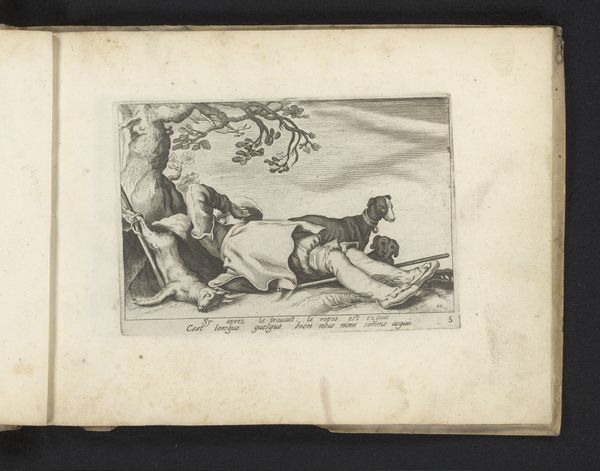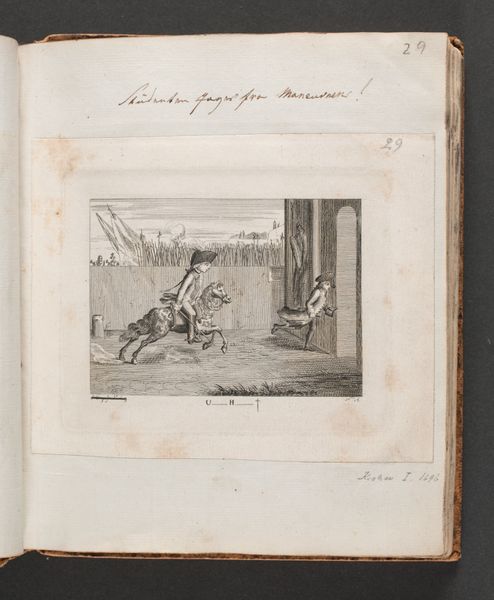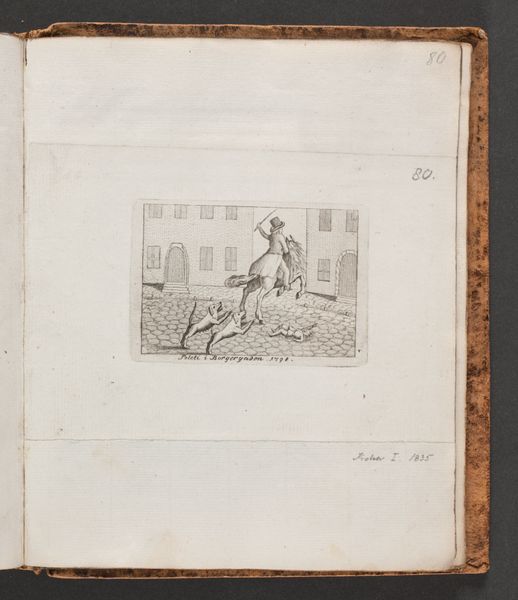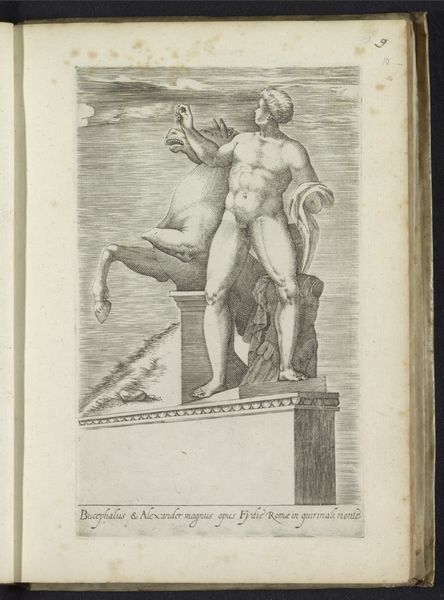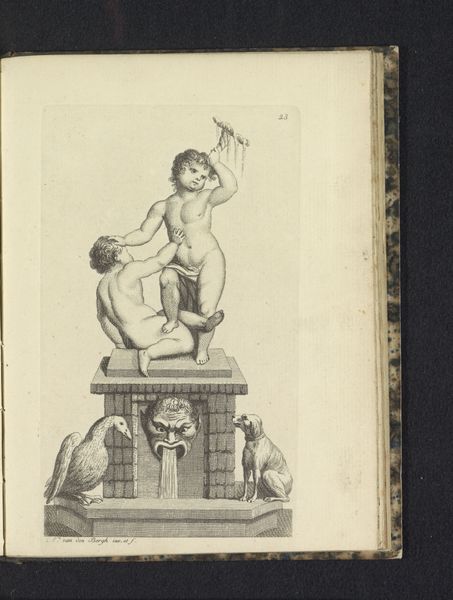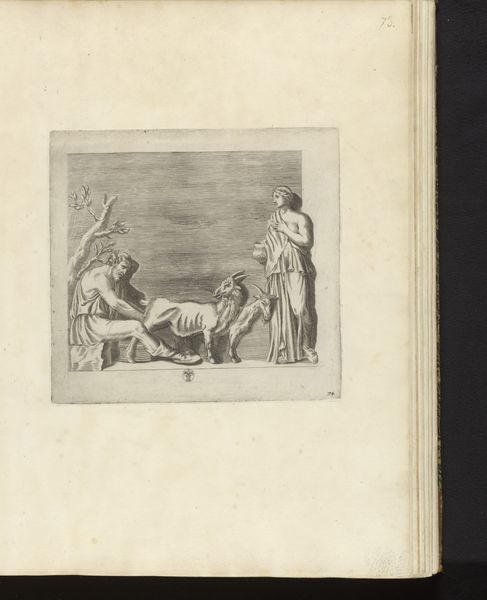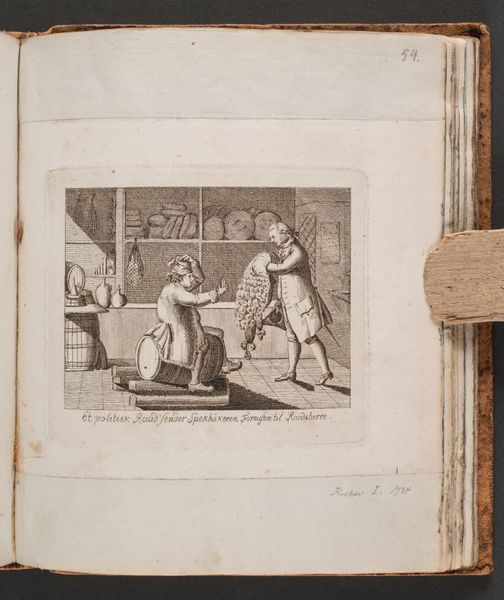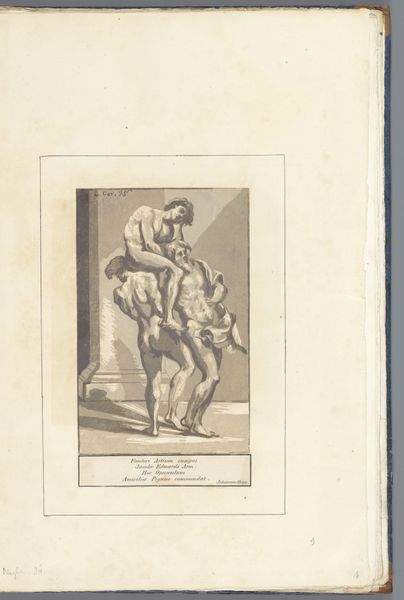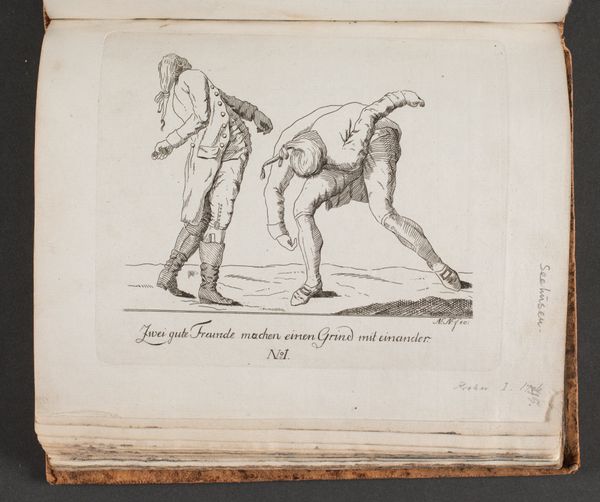
drawing, print, etching, paper, ink
#
drawing
#
narrative-art
# print
#
etching
#
paper
#
ink
#
genre-painting
Dimensions: 152 mm (height) x 137 mm (width) (bladmaal)
Editor: Here we have J.F. Clemens's etching, "Det er ikke godt at Mennesket er allene," from 1787. The image shows one figure climbing on another's back to reach a window. It seems humorous, almost like a playful scene of companionship. What strikes you about this piece? Curator: It's interesting you call it 'playful'. Looking at this through a contemporary lens, especially given the title, which translates to "It is not good that the man is alone," it sparks questions about interdependence and the potential imbalances of power inherent in relying on one another. Do you see this as purely humorous, or do you sense any subtle social commentary? Editor: I guess I hadn't considered the power dynamics. The person on the bottom is literally supporting the other! Is Clemens suggesting something about the burdens within relationships, even friendships? Curator: Precisely. Consider the era in which it was made, a time of rigid social hierarchies and expectations. The image, rendered in such a simple yet evocative manner, could be read as a commentary on how some individuals are positioned to support or uplift others, sometimes at their own expense. How does that change your perception of the artwork? Editor: It definitely complicates it. It’s no longer just a funny image but a potential reflection on the social structures of the time, perhaps even a critique of inequality masked as cooperation. It almost feels like a commentary on exploitation, using one’s body for the advancement of another. Curator: Exactly. By understanding the context of gender, class and societal expectations, we see how an artwork from the past can challenge us to consider issues still relevant today. We are reminded how social dynamics intertwine within art history. Editor: This has totally changed my interpretation! I now see so much more beneath the surface, about power, support, and maybe even exploitation. Curator: And that's the beauty of engaging with art critically. It becomes a mirror reflecting not just the past, but also ourselves and the systems we inhabit.
Comments
No comments
Be the first to comment and join the conversation on the ultimate creative platform.
